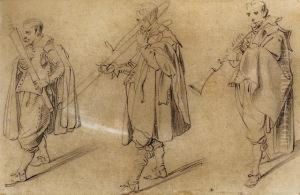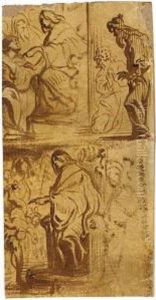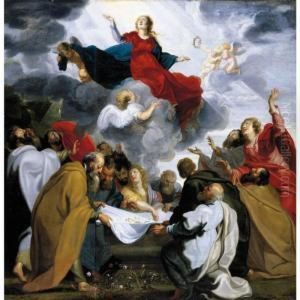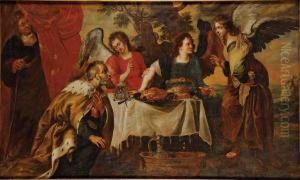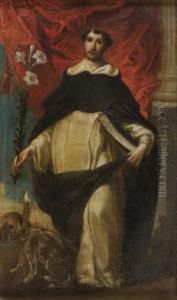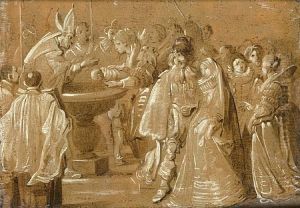Antonius Sallaert Paintings
Antonius Sallaert was a Flemish painter, draftsman, and engraver who was born in 1585, likely in Brussels, which was then part of the Spanish Netherlands. His exact birthplace and details of his early life are sparse, but it is known that he became an important figure in the Brussels art scene of the 17th century.
Sallaert was primarily known for his religious and mythological scenes, allegorical compositions, and occasional portraits. He was a member of the Brussels Guild of Saint Luke, and it is believed that he became a master in the guild around 1613. His works often reflect the influence of the Italian Renaissance and the early Baroque styles, which he may have encountered through the presence of other artists' works in the region or possibly through travel, although there is no concrete evidence that he left Brussels.
Throughout his career, Sallaert received commissions from various religious institutions and was involved in decorating local churches. His style is characterized by a robust and dynamic approach to figures, a vivid use of color, and a clear interest in dramatic lighting effects, which were innovative for his time in the Northern regions.
Sallaert's engravings also contributed to the spread of his fame beyond his immediate locality. He made engravings after his own designs and after other artists, which were circulated among art collectors and connoisseurs of the time. Unfortunately, Sallaert's works are not as well known today, and many pieces have been lost or remain unidentified.
The artist continued to work and influence the Brussels art community until his death in 1650. After his demise, his style continued to influence artists in Brussels and the surrounding region, although his name did not achieve the same lasting recognition as some of his contemporaries. Sallaert's contributions to the art of the Spanish Netherlands, however, remain a testament to the vibrant and diverse artistic culture of the period.
